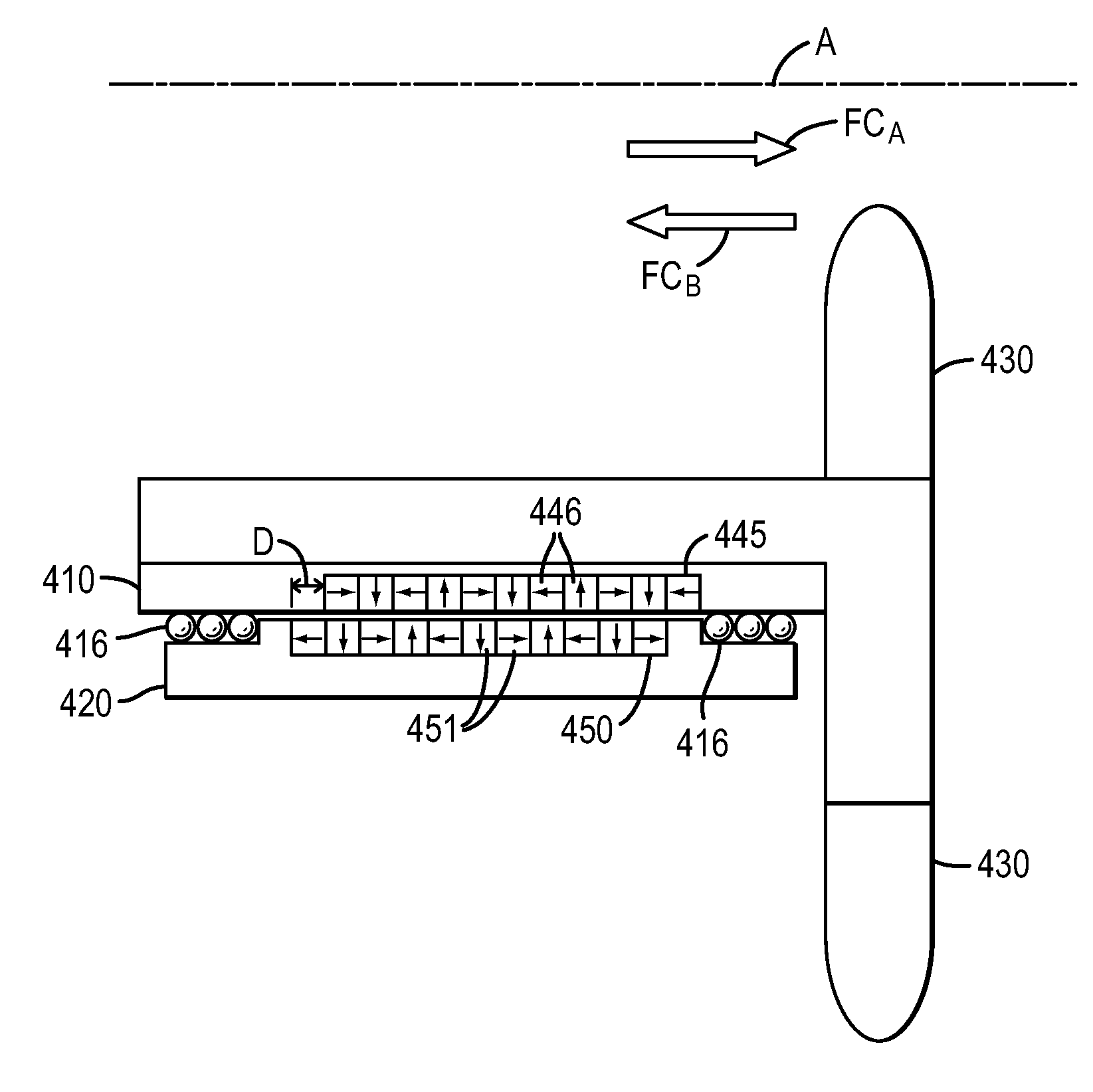Energy conversion systems and methods
a technology of energy conversion system and energy conversion method, which is applied in the direction of electric generator control, final product manufacturing, machines/engines, etc., can solve the problems of displacement of one or more components, tidal power is reliably predictable, and energy conversion system can pose challenges
- Summary
- Abstract
- Description
- Claims
- Application Information
AI Technical Summary
Benefits of technology
Problems solved by technology
Method used
Image
Examples
Embodiment Construction
[0031]Reference will now be made in detail to various exemplary embodiments of the present teachings, examples of which are illustrated in the accompanying drawings. Wherever possible, the same reference numbers will be used throughout the drawings to refer to the same or like parts.
[0032]Various exemplary embodiments of the present teachings contemplate an energy conversion system configured to interact with fluid streams, such as, for example, tidal currents, that utilizes an open-center configuration and relative movement of components of the system to convert kinetic energy from fluid flow into other useful forms of energy, such as, for example, electricity and / or hydrogen production. In various exemplary embodiments, the present teachings contemplate one or more blade members supported by and extending radially outwardly and / or inwardly from a rotatable structure that is rotatably mounted relative to a stationary structure. Fluid flowing past the system may interact with the bl...
PUM
 Login to View More
Login to View More Abstract
Description
Claims
Application Information
 Login to View More
Login to View More - R&D
- Intellectual Property
- Life Sciences
- Materials
- Tech Scout
- Unparalleled Data Quality
- Higher Quality Content
- 60% Fewer Hallucinations
Browse by: Latest US Patents, China's latest patents, Technical Efficacy Thesaurus, Application Domain, Technology Topic, Popular Technical Reports.
© 2025 PatSnap. All rights reserved.Legal|Privacy policy|Modern Slavery Act Transparency Statement|Sitemap|About US| Contact US: help@patsnap.com



